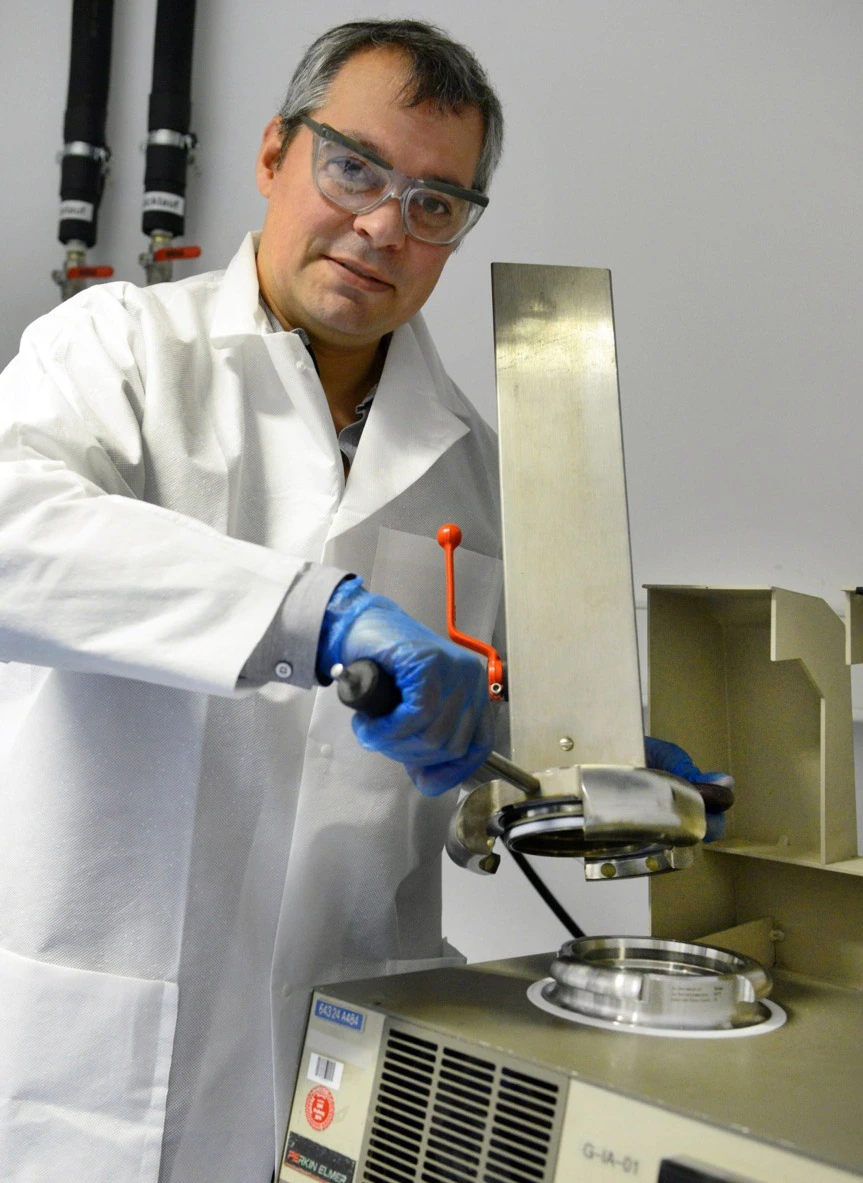Isotopic fingerprints
IsoAnalysis clarifies age or origin of samples by boron or strontium isotope analysis
How can migrations be recorded that took place hundreds of years ago? And how can an artwork be identified as a forgery? Martin Rosner, Managing Director of the Adlershof company IsoAnalysis UG, clarifies questions like these with boron or strontium isotope analysis. His method can also verify whether Beelitz asparagus was actually cultivated in Beelitz.
On some days, he receives very old teeth. On others, couriers bring water samples or artwork fragments to his office. Martin Rosner then dons his lab coat – and gets to the bottom of them all.
Rosner set up IsoAnalysis UG five years ago. He came directly from the Federal Institute for Materials Research and Testing BAM where he had been specialising as a post doc in the analysis of isotopic ratios for chemical elements like boron, strontium, lead, and lithium. To determine their isotopy, he uses multicollector thermionic mass spectrometry to compare samples prepared with wet chemicals and to find recurrent patterns. Rosner speaks of “characteristic isotopic signatures”. These signatures are equivalent to the fingerprints of a region, soil, or water, and even paints or metals.
This comparison to a fingerprint holds true in as much that a fingerprint does not disclose its information until it is compared with others. “I need reference values that I can then compare with the isotopic signatures”, he explained. He likens his work to geothermal boreholes. Before these begin, hydrologists take samples from various groundwater strata at many places in the area. Rosner then subjects these samples to his isotope analyses – in this case to determine their specific strontium isotopy. These reference values later allow him to understand, from new samples taken during and after the drillings, whether and where water mixes from the various aquifer layers. This can help the hydrologists to identify risks and verify whether the drillings are the cause of alleged consequential damage.
In the case of asparagus, Rosner has created his own database. He travelled repeatedly to Beelitz to take samples. “In the soils of the region, the asparagus assumes a characteristic isotopic signature”, he explained. If there is suspicion of fraudulent labelling, i.e. on asparagus claiming to come from Beelitz, this can be confirmed or dispelled by an isotope analysis and a comparison with the Beelitz reference values.
Like asparagus, also tooth enamel stores regional isotopic signatures. Rosner has analysed teeth that have lain in graves for over a thousand years. Some of their strontium isotope signatures differed greatly – a clear indication of migration. Every measurement adds to the reference database at IsoAnalysis UG. If he could, Rosner would analyse the whole day long. However, the analyses are too complex: the samples are dissolved in acid at pressures up to 150 bar and temperatures as high as 300 degree Celsius. Broken down to such an extent, even metals and minerals allow the isolation of the target element they contain.
In order to meet the high requirements of his industrial customers, Rosner is aiming for accreditation by the German accreditation body DAkkS. The procedure is under way. “That would be yet another distinguishing characteristic”, he said. He hopes that this accreditation will help him to gain further contacts – gladly from among the thousand companies in Adlershof, they’re not so far away.
By Peter Trechow for Adlershof Special
